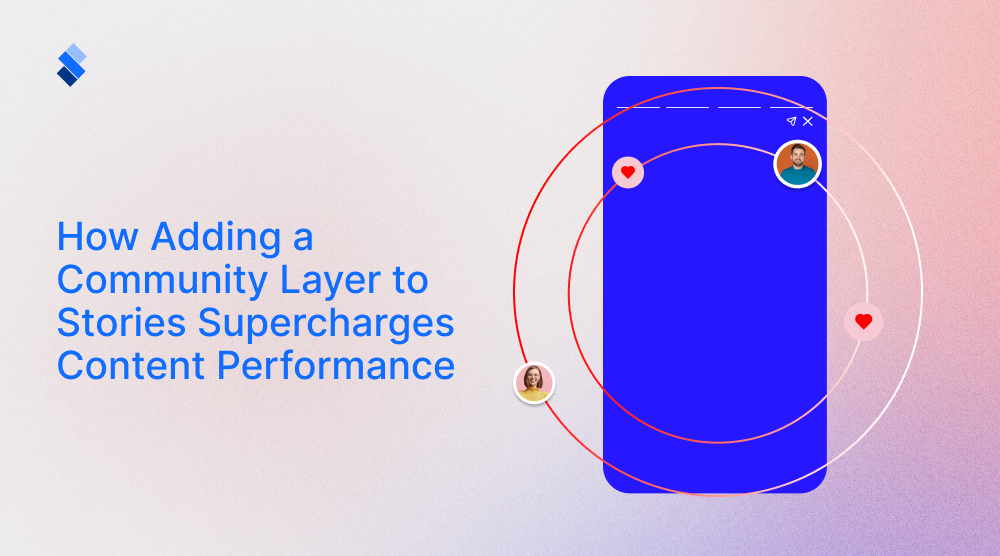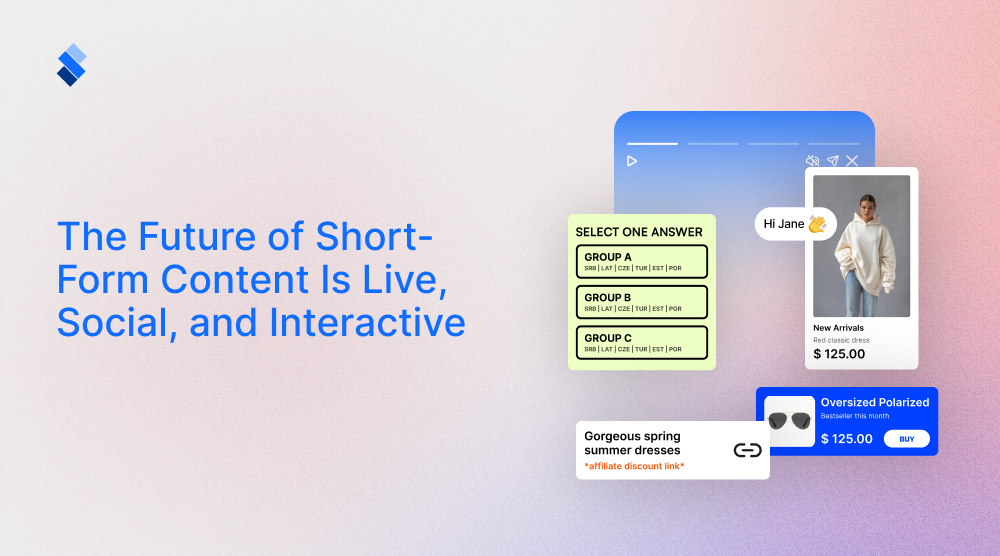StorifyMe Mobile Stories and Snaps: Transforming UX in Fintech
Mobile stories can be quite a potent tool for crafting a top-notch Fintech user experience. But, you do need to understand how they function and what role they should play in your online presence.

Fintech has always had a bit of a problem with user experience. It is easy to appreciate that all Fintech brands should have a decent UX, be it on their app on their website. But, it can be surprisingly difficult to craft a decent UX for people who know little about finance. And it can be especially difficult to answer all of their questions and requests. Well, while not a one-for-all solution, we do feel that mobile stories can solve most of the problems that one will encounter with the Fintech user experience. So, let's take a closer look.
The biggest UX problems in Fintech
Most of the problems in Fintech user experience boil down to explaining complex subjects in a digestible way and helping people seamlessly transition from one platform to the next. The added problem is that people who run Fintech companies usually don't perceive these problems as difficult. Firstly, they've grown so accustomed to finance that, in their eyes, it all may seem pretty intuitive and self-explanatory. Secondly, they might feel that going from one platform to another should be a natural proclivity of their users. Unfortunately, this is hardly the case. So let's now outline more specific problems and see how mobile stories can address them.
Data security
It should hardly come as a surprise that Fintech deals with sensitive financial information. As such, it is paramount that you implement robust security measures and that you keep your systems up to date. Unfortunately, implementing strong security without compromising user experience can be difficult. Every instance where they need to input a password or verify that they are human yanks them out of the carefully crafted experience within your app. So, the more security systems you add, the less seamless your UX will be.
Complexity of finance
As we hinted at before, financial products can be complex. Something that seems fairly self-explanatory to you might not be so for a newcomer. Keep in mind that if you run a Fintech company, you likely have an above-average education and a natural knack for finance. Meanwhile, there are a lot of people who know little to nothing when it comes to finance. They might even shy away from finance as it reminds them of maths tests.

All these are reasons why designing intuitive user interfaces can be challenging. Simplifying complex financial concepts while providing comprehensive information is a delicate balance. But, it is an important balance to master if you wish to garner a sizable audience. Know that it is your job to both educate and help people who aren't as versed in finance as you'd hope.
Trust and credibility
The key denominator of all Fintech brands is that they are trustworthy. Regardless of how big they are, or what services they provide, their brand is someone who you trust. This is important to highlight as users need to feel confident in the platform’s security and reliability if they are going to use it. But, designing interfaces that inspire trust and credibility while maintaining usability is not easy. People tend to distrust companies as most of their content seems like blatant marketing.
Personalization
Modern UX is increasingly all about personalization. Regardless of how you wish to optimise your Fintech user experience, you will need to introduce personalization in some form. And if you wish to do so effectively, you will have to gather both first-party and third-party customer data. Now, with third-party data, you won't run into much trouble. But, when it comes to first-party data, you will have to collect and analyse users' personal data. Finding the right balance between personalization and respecting user privacy is both essential and difficult.
Cross-platform consistency and transitioning
In most cases, Fintech services tend to span multiple platforms (web, mobile apps, etc.). After all, for companies to achieve the type of service that customers expect, they do need to rely on different technologies. But, this does add another layer of design difficulty with UX. Ensuring consistency in design and functionality across these platforms is important for a seamless user experience. Furthermore, it can be difficult to bridge the different platforms and achieve the desired seamlessness.

Accessibility
As a Fintech company, your goal is to reach as many people as possible. Everyone, regardless of age, gender, and social status, should find use for your platform. Therefore it is in your interest to make your platforms accessible to users with disabilities. This requires careful attention to factors like screen reader compatibility, keyboard navigation, colour contrast, etc.
User feedback
Running a Fintech company means handling customers. Regardless of how good your onboarding process is, or how intuitive you make your app, you will always have users that have questions and concerns. This is why Fintech companies need robust systems for gathering and responding to user feedback. If your customers feel that their input isn't important, they will soon look for a different customer to work with. With experience, you can learn to leverage app reviews and ratings, and even increase the number of users.
How to make use of Mobile Stories and Snaps in Fintech
So, a lot of problems and not many clear solutions. Well, in our view, mobile stories represent a unique piece of content that is worth noting in all these cases. Due to their ease of creation, personalization capabilities, and attention-grabbing nature, mobile stories stand as an ideal tool for both onboarding and customer management. Furthermore, if implemented properly, they can go a long way in building trust, gathering customer data, and connecting different platforms. To illustrate this better, let's take a couple of problems that we've outlined and see how mobile stories can be of aid.
Easy explanation of complex concepts
The first issue where mobile stories can be of use is the explanation of complex concepts. Few other content formats are as engaging and informative as mobile stories. Because they naturally combine visual elements with written content they can be very effective in illustrating complex concepts. Furthermore, keep in mind that the story format doesn't necessitate that you put everything within a single frame. In fact, mobile story carousels represent a terrific way to break down complex products or processes into digestible, bite-sized content that users can easily understand.
Increased user engagement
Convincing users to engage with your content can be difficult for many reasons. Not all content types are suited for engagement as they are primarily made for passive observation. Well, mobile stories can be easily enhanced with interactive finance content. This makes them ideal for quick interactions with taps and swipes. Fintech companies can leverage mobile stories to increase user engagement with their platforms, leading to improved retention and satisfaction. Furthermore, they can make use of mobile stories to gather valuable customer data.

f you can outline why you need a specific piece of data from your customers, and then provide an easy way for them to input that data, you will have a far easier time gathering it. Furthermore, if the gathered data improves the customer experience, you will both improve customer trust and their overall satisfaction with your company.
Personalized experience
Stories can be personalized based on user preferences and behavior. Fintech companies can use data analytics to deliver personalized educational content that addresses specific user needs and interests, helping to educate users about financial products and concepts in a more engaging way.
Trust-building
Traditional marketing content usually comes off as inauthentic. After all, we've all been bombarded with marketing so much that when we view something that looks like it, we tend to ignore it. As such, it is surprisingly difficult to have any rapport with modern customers if you rely solely on standard marketing content.

Mobile stories, on the other hand, are still perceived as user-generated content, and not strictly marketing. This causes them to be seen as more authentic and spontaneous compared to traditional marketing content. You can use these formats to humanize your brand and build trust with users by sharing behind-the-scenes glimpses of their operations. You can also showcase customer testimonials or insights from financial experts. The more you build your brand around helpful tips regarding finance, the more people will chime in on what you have to say. And the easiest way to catch and keep their attention is through mobile stories.
Accessibility and inclusivity
While stories cannot address all disabilities, they can be fairly easily made with certain disabilities in mind. For instance, you can add closed captions and alt text for images. And you can even create different versions of story content, to address more specific disabilities. By doing you will ensure that users with disabilities can access and engage with the content, promoting inclusivity in Fintech platforms.
Cross-platform transitioning
One of the best uses for story content is for transitioning between platforms. Firstly, it is important to note that both mobile stories and snaps can be easily shared across different mobile platforms, providing a consistent user experience regardless of the device or operating system. Brand consistency is important in Fintech, as it ensures that you have a memorable presence on various platforms.

Secondly, story format can be quite useful as a way to bridge content. It is by no means uncommon that going from one platform to another is an integral part of the user journey. If a person sees something on a social media page they might want to check out your website. And when they do so, they might want to download your app. And while on your app they might need further information, which will bring them back to your website. Such transitions between platforms are common, which is why they need to be seamless.
One of the best ways to make them seamless is with story content. A short mobile story can outline where the person is transitioning, and why they are doing so. And seeing that you can put the same story within an app or website, the transition ought to be hardly noticeable. This also makes in-app stories a great choice for cross-promotion, as it can also make transitioning between brands seamless.
Feedback
A reputable brand is the one that has an open communication with its users. In Fintech especially it is important to listen to user feedback and to interact with their comments and requests. Here again, we find a potential use for mobile stories. For one, they allow for direct interaction with users through features like polls, quizzes, and swipe-up links. You use these interactive elements to gather feedback or conduct surveys. If you then use that knowledge to change something within your company, you will give your users a feeling that you care about their experience. Another way is to make a mobile story where you outright thank your users and showcase how their input changed the way you run your company. The more your users feel included, the more they will want to do business with you.
Final thoughts
By now we've highlighted the most important features that make mobile stories a powerful tool in Fintech user experience. If you wish to learn more about Mobile storytelling for fintech brands we strongly suggest that you do further research on the StorifyMe website. Top-notch user experience is something that takes a while to craft. So, the sooner you start integrating mobile stories into it, the sooner you will recognize how potent and versatile they can be.







